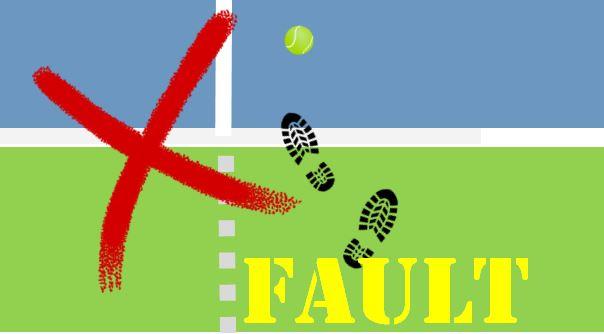Tennis can become complex along with its excitement when the match starts. One term that frequently arises throughout a match and holds considerable weight is “fault.” In tennis terms, fault refers to more than an errant shot; rather it plays an integral role in shaping match outcomes. Through this exploration, we’ll dive deep into what constitutes a fault in tennis as well as its influence on its flow and dynamics.
Definition of Fault in Tennis
Simply put, a fault in tennis refers to any violation of the rules during a serve that does not land within an opponent’s service box – an area diagonally opposite from where the server stands that contains two sections for singles play and four for doubles play with predefined dimensions set out by game rules.
First Serve Vs. Second Serve
Players have two serves to start each point. The initial serve should be executed with maximum power and spin; its goal should be to put the server in an advantageous position right from the outset of a point. If it lands within the bounds of their opponent’s service box, play will proceed; otherwise, if it lands outside or fails to clear the net altogether, they get another attempt.
After an initial service fault, the second serve can become even more crucial in maintaining the point. Under pressure, players often opt for more conservative serve approaches that prioritize accuracy over sheer power; one second fault results in a loss of point for both parties involved; this two-strike system places a premium on serving consistency while adding an element of suspense with each serve attempt.
Foot Faults: Faults can also result from foot faults, which is a less frequent yet still serious form of infraction. A foot fault occurs when the server steps on or across either the baseline or center mark while serving. In accordance with rules set forth, they should keep contact with the ground within their baseline while not crossing over any lines marking their court until after hitting the ball has been struck.

Umpires and Line Judges
Tennis matches are overseen by umpires and line judges to maintain fair play and uphold the rules, with umpires having authority to call foot faults while line judges monitor where balls land inside or outside the service box. In some tournaments, technology such as Hawk-Eye has been introduced to aid officials with making accurate line call decisions, thus decreasing any margin of error in fault determination.
Impact on the Game
Faults play an enormous role in tennis. A serve that sets the right mood sets off each point, and any disruption of its natural rhythm leads to immediate consequences; potential lost points as well as long-term psychological warfare as players strive for faultless serves under close watch from both opponents and officials.
Strategies to Minimize Faults
Professional players and coaches employ various strategies to reduce faults and maximize the effectiveness of serves, including mastery of different serves such as flat serve, kick serve and slice serve – each offering its own trajectory and spin. Furthermore, players work on footwork techniques that will allow for proper positioning during serves to reduce foot faults.
Conclusion
In tennis’ intricate dance, faults emerge as an essential factor that can alter the trajectory of a match. They go far beyond being technical issues such as balls landing outside the service box; faults represent mental and strategic challenges players must navigate on court – whether its intense first serve or precise second serve – they highlight pressure, resilience, and the pursuit of perfection within tennis’ world. Understanding these nuances deepens our appreciation for this sport while underscoring how skill plays off against strategy as well as error on the court.

